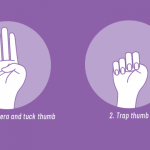
By Matt Doyle, VP and co-founder of Excel Builders, a truly unique custom home builder, creating homes that make every day easier.
getty
Labor shortages are hitting businesses everywhere. Nearly 4 million workers quit their jobs in August alone. Many of those who left their jobs were working for minimum wage but many skilled and specialist workers are also turning in their resignations.
This is a major issue for my business. I build custom homes that require skilled work from experienced crafters. Many of these workers already command high salaries, so I’ve found it necessary to think of creative ways to reward new hires without spending more. Here are some incentives I’ve found to work.
Give them flexibility.
Flexibility appears at the top of the list of many employee demands. After we all left the offices for a while, some people realized they’d rather be looking for another job than return to an office for 40 hours a week.
You should predict that potential hires will want to know if you can offer flexibility as a perk. That’s why it should be included in your postings for jobs and be introduced as one of the advantages of working for you.
MORE FOR YOU
Nearly all businesses can manage more flexibility in some way. My business, for example, is all done on outside sites. So, while I can’t offer my employees work-from-home, I can at least move meetings online so that we don’t need to be in the home office as much.
Look for opportunities where you can move other events that don’t need the office to an online format so people can handle those days from home. When you have processes that work, you can start offering flexibility as a benefit to new hires.
Offer them more autonomy.
Autonomy can be a highly motivating benefit to workers who are already performing excellently in their field. Many of the workers I hire to complete a custom job have specialized construction knowledge, but the same principle easily applies to knowledge workers or other types of employees.
To explore how you can give employees and new hires more autonomy, explore your existing procedures for checking in with or reporting to managers. Is it possible to reduce the number of times that trusted employees report in? Would they feel better if they could report to someone higher up the chain?
Fix your management flow chart first, and then find out what it tells you about what you can offer to new hires.
Take a lighter approach with ‘rules.’
The last year has been stressful for everyone. Getting the work that matters out the door has been challenging for a lot of businesses who were left short-staffed or hit by supply chain problems.
Many of us have learned that you have to be careful about how much pressure you put on workers who are already managing a lot more strain than usual. For many of us, that’s meant relaxing rules that were, frankly, less important than keeping people on task.
Many of the rules that ended up on the side may not have been chosen carefully at the moment. That’s why you should take some time now to think about which rules need to be enforced again, and which ones may never have really mattered in the first place.
Some businesses realized that there wasn’t a real benefit to a suit-and-tie dress code once everyone had transitioned to more casual attire. Other businesses found out flexible entry and leaving times were just better for everyone. Turn these adjustments into practices and then use them to show potential new hires that the environment you’ve created is less stressful.
Make better pitches for skilled workers.
Now you know some practices that you can use to attract skilled workers without dipping too deep into the budget. More flexibility is attractive to many hires right now who are demanding more time for their families. Autonomy can provide an incentive for some of the best candidates out there, and creating a less stressful working environment can attract high-quality candidates who were driven away by the policies of more rigid employers.







